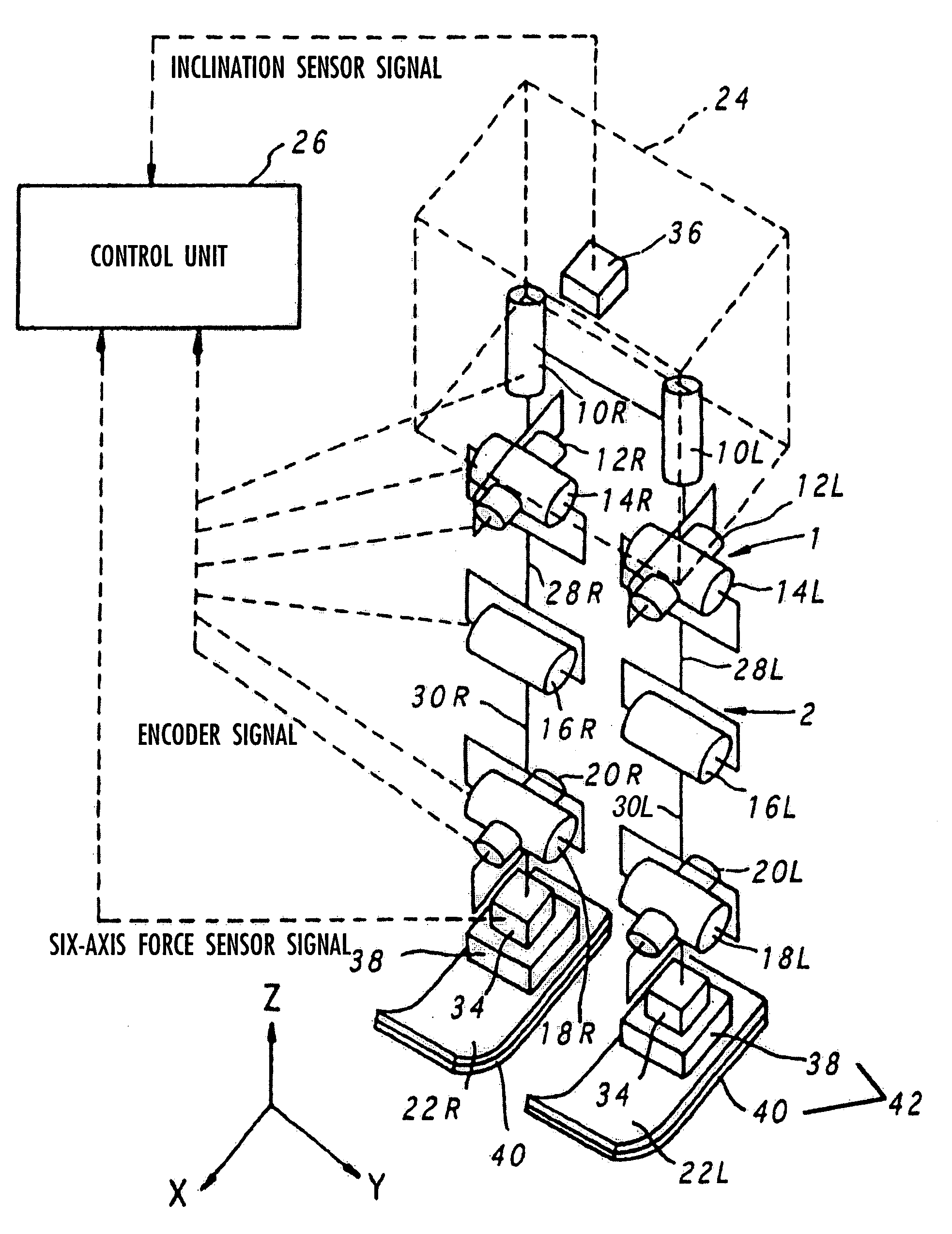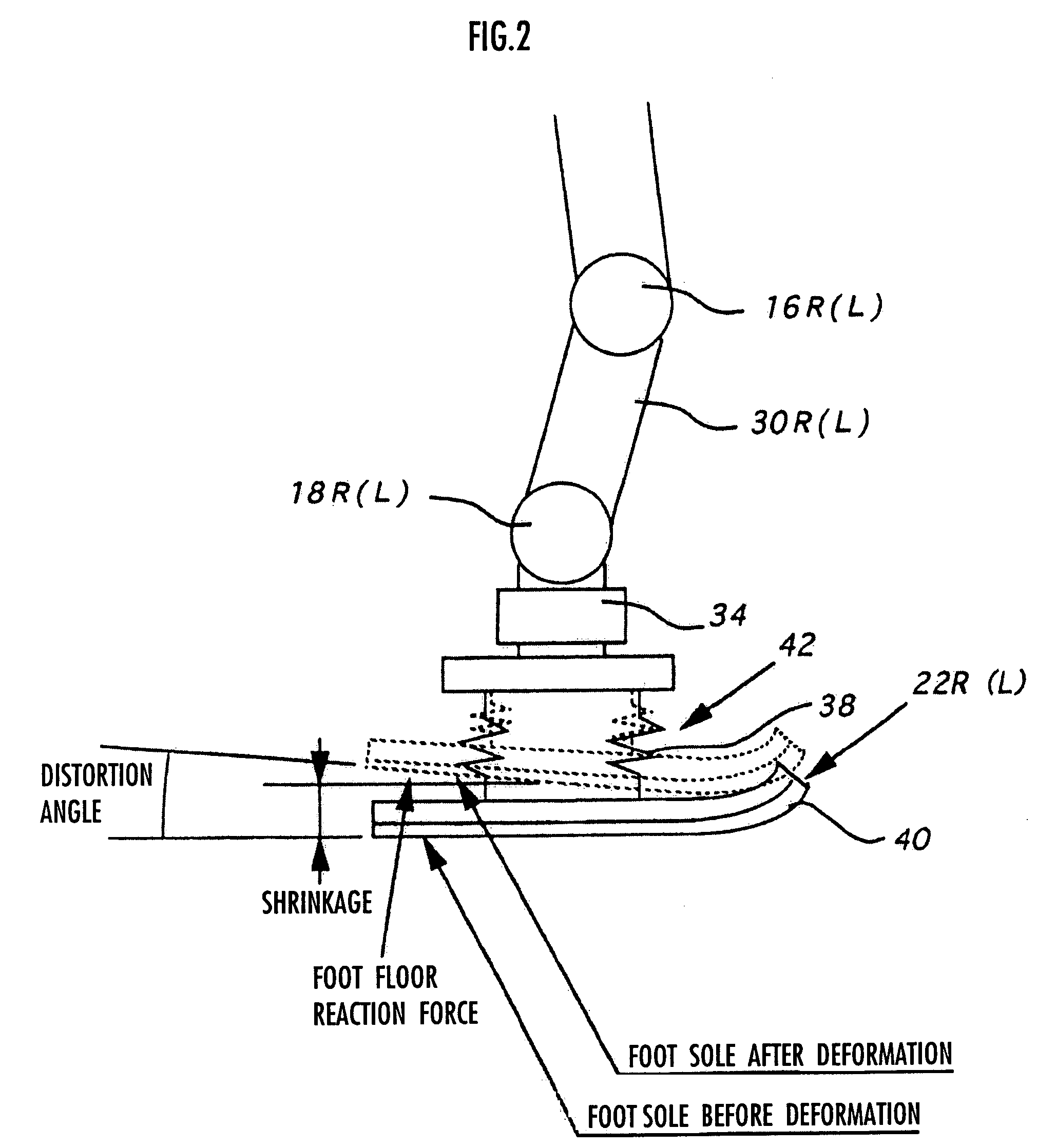Gait generation device for legged mobile robot
a mobile robot and generation device technology, applied in the direction of electric programme control, program control, instruments, etc., can solve problems such as errors
- Summary
- Abstract
- Description
- Claims
- Application Information
AI Technical Summary
Benefits of technology
Problems solved by technology
Method used
Image
Examples
first embodiment
[0248]Now, details of the processings performed by the gait generation device 100 according to the present invention will be described more specifically.
[0249]The gait generation device 100 according to this embodiment generates sequentially a desired gait for one step from the landing of one leg 2 of the robot 1 to the landing of the other leg 2, (desired gait according to the definition (b″)). For example, in the case of generating the desired running gait shown in FIG. 5, the desired gait is generated sequentially from the start of a one-leg supporting period to the end of the following floating period (that is, the start of the next one-leg supporting period). Here, the desired gait to be newly generated is referred to as a “current time gait”, the next gait is referred to as a “next time gait”, and the desired gait after next is referred to as a “next but one gait”. In addition, the desired gait generated immediately before the current time gait is referred to as a “last time g...
second embodiment
[0637]Now, the present invention will be described. A correction method for a device according to the second embodiment is of a full model feed forward type. Furthermore, the method uses the inverse dynamics full model (inverse full model), doesn't correct the input of the simplified model gait and uses a perturbation model.
[0638]FIG. 50 is a functional block diagram for illustrating an operation of the device according to the second embodiment, specifically, the gait correction method in step S038 in the flowchart in FIG. 13. However, as in the first embodiment, a simplified model 200 shown in FIG. 50 is not simply a dynamics model but represents the process from steps S010 to S034 described above, that is, calculation (determination) of the simplified model gait's instantaneous values. Therefore, the sections following the simplified model 200 in FIG. 50 are associated with the processing in step S038. Of the functional sections shown in FIG. 50, same functional sections as those ...
fourth embodiment
[0754] the perturbation model 202 for correcting body horizontal positions and the perturbation model 203 for correcting body posture angles are used. In addition, two distributors 220 and 221 are used.
[0755]The distributors 220 and 221 are one-input two-output transfer blocks and determine one of the outputs according to the input (for example, determine one of the outputs by performing, on the input, a signal processing concerning frequency characteristics, dead-band characteristics, saturation characteristics or the like) and determine the other output in such a manner that the sum of the two outputs exactly or substantially agrees with the input.
[0756]The distributor 220 receives the body posture angle correcting moment Mr, which is the difference between the limited corrected desired floor reaction force's moment Mltd and the moment Mpf for stabilizing the perturbation model for correcting body horizontal positions (that is, output of the Mr calculator 214) and provides a body ...
PUM
 Login to View More
Login to View More Abstract
Description
Claims
Application Information
 Login to View More
Login to View More - R&D
- Intellectual Property
- Life Sciences
- Materials
- Tech Scout
- Unparalleled Data Quality
- Higher Quality Content
- 60% Fewer Hallucinations
Browse by: Latest US Patents, China's latest patents, Technical Efficacy Thesaurus, Application Domain, Technology Topic, Popular Technical Reports.
© 2025 PatSnap. All rights reserved.Legal|Privacy policy|Modern Slavery Act Transparency Statement|Sitemap|About US| Contact US: help@patsnap.com



